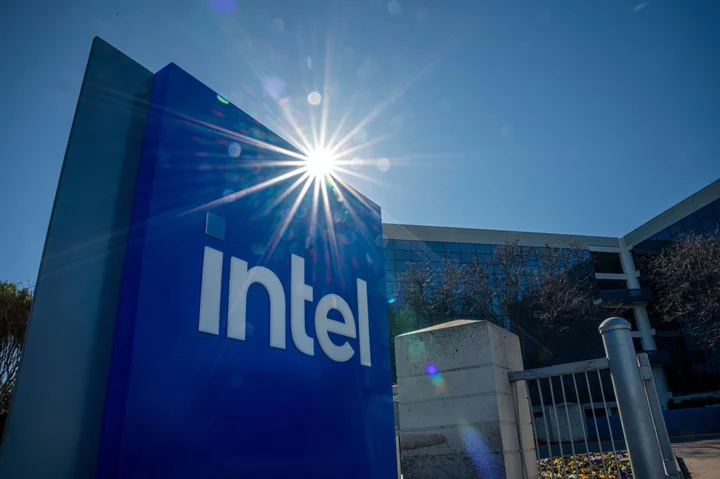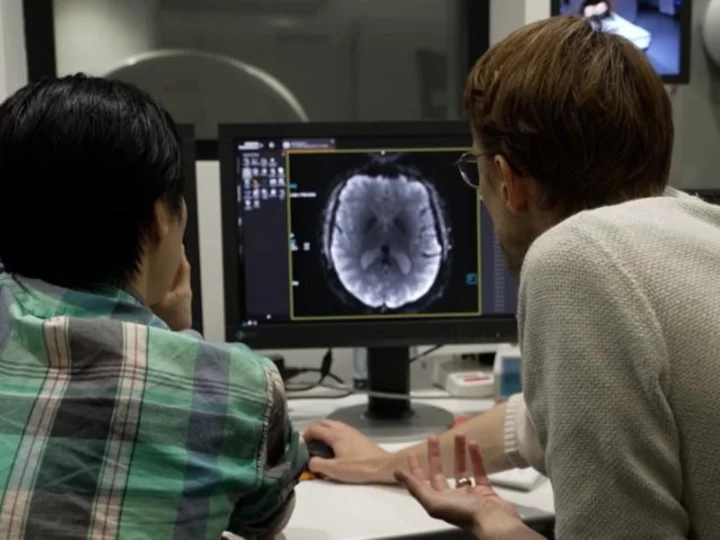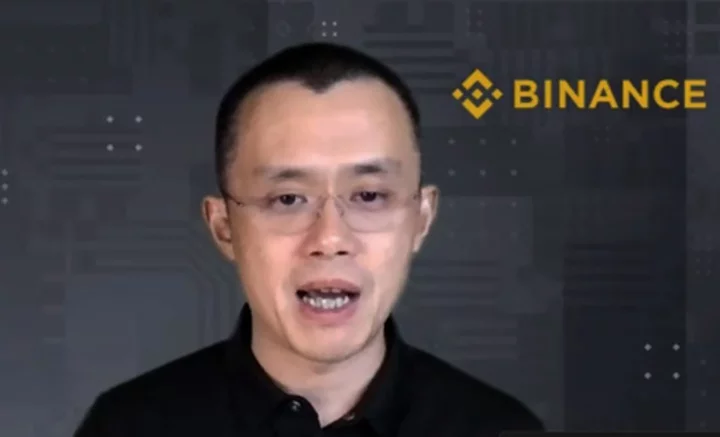
Put your fave tunes on repeat with noise-canceling Beats Studio Buds+ for $40 off
SAVE $40: The Beats Studio Buds+ are on sale for $129.95 at Amazon as of
2023-08-31 01:48

James Maddison FC 24: How to Complete the Premier League POTM SBC
James Maddison FC 24 Premier League Player of the Month SBC is now live in Ultimate Team for the next 29 days. Here's how to complete the SBC and if it's worth it.
2023-09-24 01:55

Valorant Patch 7.04: All Agent Changes
Valorant Patch 7.04 reveals changes to 11 Agents in Valorant Episode 7 Act 2, including a major nerf to all of Jett's abilities.
2023-08-25 00:57

Amazon Plans to Add ChatGPT-Style Search to Its Online Store
Amazon.com Inc. plans to bring ChatGPT-style product search to its web store, rivaling efforts by Microsoft Corp. and
2023-05-16 01:49

AI industry and researchers sign statement warning of 'extinction' risk
Dozens of AI industry leaders, academics and even some celebrities on Tuesday called for reducing the risk of global annihilation due to artificial intelligence, arguing in a brief statement that the threat of an AI extinction event should be a top global priority.
2023-05-30 21:49

Badger Technologies and Stop & Shop Stores Upgrade Marty the Robot at 300+ Locations to Improve Customer Shopping Experiences
NICHOLASVILLE, Ky. & QUINCY, Mass.--(BUSINESS WIRE)--Sep 18, 2023--
2023-09-18 21:18

Intel Jumps After Upbeat Forecast Boosts Optimism About Chips
Intel Corp. shares gained after the chipmaker gave a bullish revenue forecast for the current period, indicating that
2023-07-28 04:23

South African Electricity Minister Attacks Climate Finance Pact
South Africa’s electricity minister attacked the country’s groundbreaking $8.5 billion climate finance pact with some of the world’s
2023-07-25 18:45

Most of Florida work group behind controversial new guidelines on African American history did not agree, report says
Most of the members taking part in the working group developing new standards for teaching African American history in Florida reportedly didn’t agree to the parts of the controversial measure which has drawn strong rebukes. Three members of the group have told NBC News that this includes the policy that middle school students should be taught that enslaved people developed “skills” that they were able to use for their “personal benefit”. The members, who chose to remain anonymous, told the network that most of the working group didn’t want the inclusion of language stating that high school students should be taught about violence carried out “by African Americans” during lessons about issues such as the race massacres in Ocoee and Tulsa. “Most of us did not want that language,” one of the members told NBC, noting that two out of the group’s 13 members pushed for the inclusion of those two items. The work group’s standards were unanimously approved by the Florida Board of Education on 19 July. They are now set to be instituted in teaching kindergarten through 12th grade. The standards have been slammed as propaganda and pushing a sanitized version of US history. Critics argue that the standards are attempting to conceal the horrors of slavery, such as rape, murder, and forced labour in an attempt to make it seem like an apprenticeship. “These extremist, so-called leaders should model what we know to be the correct and right approach if we really are invested in the well-being of our children,” Vice President Kamala Harris said last week. “They dare to push propaganda to our children. This is the United States of America. We’re not supposed to do that.” The members of the working group who spoke to NBC News told the network that only two members wanted the inclusion of the controversial language. Those members, William Allen and Frances Presley Rice, said in a joint statement last week that the new standards set guidance for “comprehensive and rigorous instruction on African American history”. “The intent of this particular benchmark clarification is to show that some slaves developed highly specialized trades from which they benefitted,” they said. “This is factual and well documented.” The members said that Dr Allen pushed for including that slaves benefitted from the skills that they learned and that Dr Presley Rice argued for the inclusion of “violence perpetrated against and by African Americans”. “People were very vocal,” one group member said, questioning “how there could be a benefit to slavery”. “However, Dr Allen is focusing on the few slaves who actually did learn something and keeps alluding to Frederick Douglass,” one work group member told NBC. “What he is saying is not accurate for most of the slaves.” The three group members said separately that Dr Allen is “persuasive” and “knowledgeable” and that the working group ended up deferring to him. Two of the members said the issue was tabled to be discussed at a later time and didn’t remember that it ever came up for a vote. One member said the language was “problematic” and that the group “could have done a better job” if given more time. Dr Presley Rice told NBC: “I recommend highly that you get in touch with the communications department at the Department of Education, and all your questions will be answered.” The Independent has reached out to the department for comment. The changes were put in place to satisfy a new law signed by Florida Governor and Republican Presidential candidate Ron DeSantis, who has distanced himself from the process of creating the new standards even as he defended them. “You should talk to them about it,” he said about the group last week. “I didn’t do it. I wasn’t involved in it.” “What they’re doing is, they’re probably going to show some of the folks that eventually parlayed, you know, being a blacksmith into doing things later in life.” “Any attempt to reduce slaves to just victims of oppression fails to recognize their strength, courage and resiliency during a difficult time in American history,” Dr Allen and Dr Presely Rice said in their statement. “Florida students deserve to learn how slaves took advantage of whatever circumstances they were in to benefit themselves and the community of African descendants,” they added. Dr Presley Rice wrote on 22 July on Facebook that “It saddens me to observe how falsehoods are being perpetuated now by some people with questionable intent, using cherry-picked language, taken out of context, to undermine the fact-based Academic Standards crafted by the Workgroup I was a part of, due to my decades-long quest to have the full, unvarnished history told about African Americans”. Dr Allen previously told NBC that the group “deliberated between February and the end of April to review the curriculum standards and to propose new benchmarks and standards”. “I think we may have had, over the course of the period from February to April, three or four meetings,” he added. Mr DeSantis said last week that the new curriculum “is rooted in whatever is factual”. “They listed everything out,” he added. “And if you have any questions about it, just ask the Department of Education. You can talk about those folks but I mean, these were scholars who put that together. It was not anything that was done politically.” The president of the Florida Education Association, Andrew Spar, told NBC last week that “Right now we are working to bring people together to get these standards changed or overturned”. “We are concerned about the conflict that teachers have — we are required to be honest and ethical in our dealings and we are required to teach the standards. What do we do if the standards are not honest and ethical?” he asked. Read More Historically Black fraternity drops Florida for convention because of DeSantis policies DeSantis car crash revealed misuse of government vehicles for 2024 campaign, report claims Water is refreshing in the heat, right? In parts of Florida this past week, not so much CLIMATE GLIMPSE: Here's what you need to see and know today Historically Black fraternity drops Florida for convention because of DeSantis policies Seven in 10 US adults believe in angels, new poll shows
2023-07-30 02:21

Light & Wonder Enters Into Agreement With Shift4 to Boost Its State-of-the-Art Cashless Gaming Solution
LAS VEGAS & ALLENTOWN, Pa.--(BUSINESS WIRE)--Jun 7, 2023--
2023-06-07 20:29

US bond traders seek edge by adopting tech -report
By Matt Tracy (Reuters) -U.S. bond investors are coming around to using technology more to trade fixed-income products, as they
2023-06-22 01:52

Amazon’s Best Labor Day Deals Have Arrived Early — Shop Them Here
Amazon is known for having the hottest deals on the internet 365 days a year, and things are heating up big time ahead of Labor Day weekend. Summer’s unofficial sendoff always comes with epic deals on big-ticket items like mattresses and furniture, but if you’re in the market for clever life upgrades, Amazon has you covered.
2023-08-18 04:28
You Might Like...

Microsoft hires ousted OpenAI boss Sam Altman

PinkyDoll and the rise of NPC streamers on TikTok Live

Why are actors against using AI? Inside allegations of digital scanning and the battle for performers' rights

How the technology behind ChatGPT could make mind-reading a reality

Europe Must Curb Energy Use Next Winter to Replace Gas for Good

Pokimane asserts Sykkuno is treated like 'K-Pop idol' as streamer boasts 'highest female demo' fan base

MACKIE LAUNCHES DLZ CREATOR – THE ALL-IN-ONE PODCAST MIXER THAT MAKES ANYONE SOUND LIKE A PRO

Binance mishandled funds and violated securities laws, according to SEC lawsuit
